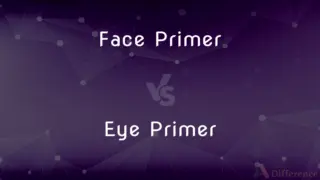Action Research vs. Case Study — What's the Difference?
Edited by Tayyaba Rehman — By Fiza Rafique — Published on November 8, 2023
"Action Research" is a process aimed at both understanding and enacting change in a specific context, while "Case Study" is an in-depth examination of a specific instance or occurrence to draw broader insights.

Difference Between Action Research and Case Study
Table of Contents
ADVERTISEMENT
Key Differences
"Action Research" and "Case Study" are both methodologies used in research, but they serve different purposes and employ distinct approaches. Action Research is typically a cyclical process where the researcher intervenes in a system, reflects on the outcomes, and then plans the next steps. On the contrary, a Case Study delves deeply into a specific situation or individual case to extract detailed insights, without necessarily influencing the situation.
When considering the application of these research methods, Action Research often seeks to solve a particular problem or improve a situation. The researcher actively participates in the process, intending to enact positive change. A Case Study, however, often takes on the role of an observer, aiming to provide a rich and detailed account of a particular case, whether it be an individual, organization, event, or situation.
In terms of generalizability, Action Research focuses on producing actionable insights for a specific context. The findings might not always be broadly applicable. A Case Study, while also particularistic, seeks to offer general insights or generate theories based on the detailed analysis of the case at hand.
Data collection in Action Research is dynamic and iterative. Researchers engage, act, and reflect, adjusting their methods and approaches based on the evolving situation. In contrast, Case Studies use a variety of data sources, from interviews to documents, to construct a comprehensive account of the case.
Both methods prioritize depth over breadth. Action Research does so in its iterative immersion in a problem space, emphasizing understanding and change. Case Studies achieve depth by their intensive focus on a singular case, teasing out its intricacies and nuances.
ADVERTISEMENT
Comparison Chart
Purpose
Understand and enact change
Detailed examination for broader insights
Role of Researcher
Active participant
Observer
Data Collection
Dynamic and iterative
Various sources for comprehensive understanding
Generalizability
Specific to context
Particularistic but can offer general insights
Focus
Problem-solving and improvement
In-depth understanding of a specific case
Compare with Definitions
Action Research
Participatory research to solve real-world problems.
Community members employed action research to address local water issues.
Case Study
Comprehensive analysis of a single instance or occurrence.
The psychological case study focused on one individual's unique experiences.
Action Research
A method combining action and research to enact improvements.
Urban planners utilized action research to redesign the city's public spaces.
Case Study
Intensive exploration using multiple data sources.
Through a case study, researchers unraveled the causes of the city's financial crisis.
Action Research
Cyclical process for understanding and change.
Teachers used action research to improve classroom engagement.
Case Study
Research method for deep insights into complex issues.
The university conducted a case study on its diversity initiatives.
Action Research
Reflective and iterative inquiry.
Through action research, the hospital staff identified and tackled patient care challenges.
Case Study
Detailed examination of a specific case for broader understanding.
She wrote a case study on a successful startup.
Action Research
Practical and collaborative investigation.
The company adopted action research to co-create solutions with its customers.
Case Study
Detailed investigation to generate or test theories.
The marketing team's case study provided valuable insights into consumer behavior.
Common Curiosities
Is Action Research qualitative or quantitative?
It can be either, but it often leans towards qualitative methods given its exploratory and context-specific nature.
What's the primary purpose of Action Research?
The primary goal is to bring about change and improvement in practices while enhancing understanding through research.
What is Action Research?
Action Research is a research approach that involves actively participating in a change situation while simultaneously conducting research.
How does Action Research differ from traditional research?
Action Research is cyclical, involving iterative phases of planning, acting, observing, and reflecting, while traditional research often follows a linear methodology.
When is a Case Study used?
It's used when researchers want to gain a deep understanding of a specific real-world context or when a situation is unique or rare.
Who typically conducts Action Research?
Often practitioners, like educators or organizational leaders, conduct it to address issues or improve practices within their specific contexts.
How is data gathered in Action Research?
Through a variety of methods including observations, interviews, and document analysis, depending on the research context.
How is data collected in a Case Study?
Through multiple sources, such as interviews, observations, documents, and sometimes surveys or experiments.
Is Action Research collaborative?
Often, yes. It typically involves collaboration between the researcher and participants to identify issues and implement solutions.
Is a Case Study qualitative or quantitative?
While it's primarily qualitative, case studies can incorporate quantitative data.
How long does a Case Study last?
The duration can vary. Some last a few days, while others, especially longitudinal case studies, can extend for years.
Does Action Research require a hypothesis?
Not necessarily. It often starts with a general area of focus rather than a specific hypothesis.
What are some criticisms of Action Research?
Some critics argue it may lack objectivity due to the researcher's involvement or that its findings might not be generalizable.
Can Action Research be published?
Yes, many academic journals and conferences recognize and publish action research findings.
Are case study findings generalizable?
Typically, case studies prioritize depth over breadth, so their findings are not always generalizable but provide rich insights.
Can a Case Study cover multiple cases?
Yes, while single-case studies are common, multiple-case designs that examine several instances to compare or contrast are also prevalent.
How are case study findings presented?
They are often presented as a narrative or report detailing the context, methods, findings, and interpretations.
What's the main criticism of case studies?
Critics often point to the lack of generalizability and potential for researcher bias.
Is a Case Study used only in social sciences?
No, while common in social sciences, case studies are also used in disciplines like medicine, business, and ecology.
What is a Case Study?
A case study is an in-depth examination of a particular situation, event, or individual to explore underlying principles, causes, or results.
Share Your Discovery

Previous Comparison
Surname vs. Last Name
Next Comparison
Face Primer vs. Eye PrimerAuthor Spotlight
Written by
Fiza RafiqueFiza Rafique is a skilled content writer at AskDifference.com, where she meticulously refines and enhances written pieces. Drawing from her vast editorial expertise, Fiza ensures clarity, accuracy, and precision in every article. Passionate about language, she continually seeks to elevate the quality of content for readers worldwide.
Edited by
Tayyaba RehmanTayyaba Rehman is a distinguished writer, currently serving as a primary contributor to askdifference.com. As a researcher in semantics and etymology, Tayyaba's passion for the complexity of languages and their distinctions has found a perfect home on the platform. Tayyaba delves into the intricacies of language, distinguishing between commonly confused words and phrases, thereby providing clarity for readers worldwide.












































